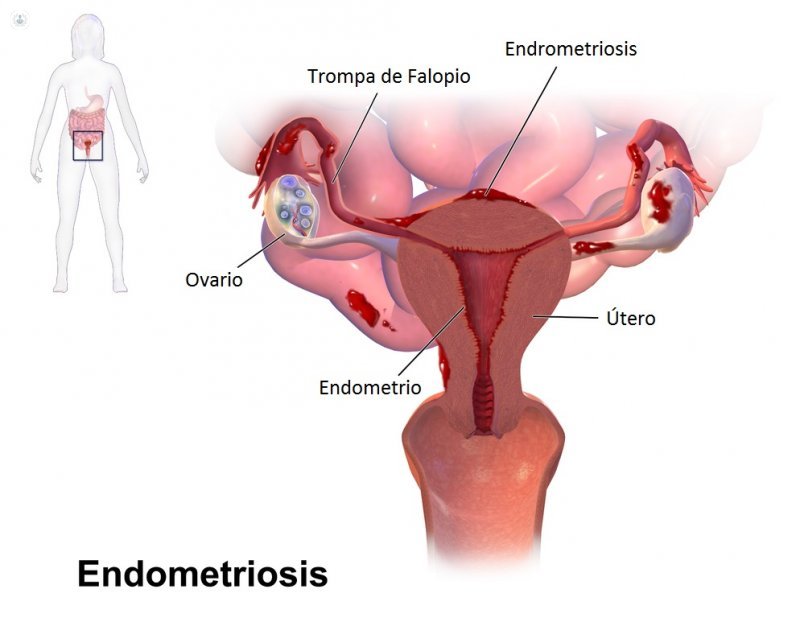Endometriosis, a benign disease but disabling
Written by:Endometriosis is a benign self-limited disease caused by the migration of cells of the uterine cavity (endometrium) to other organs, mainly the ovaries and pelvic peritoneum. Causing pelvic pain in some women makes it a disease that alters the quality of life. The treatment is limited to relieving symptoms.

Endometriosis: how it manifests itself and what produces
What happens is a retrograde migration of cells from the uterine cavity (endometrium) into the abdominal cavity, rather than into the vagina and the outside during menstruation. This is what would produce the formation of ovarian cysts and endometrial implants in the peritoneum of the pelvis, which is a thin coating layer. As a result, each of the rules, bleedings occur either within ovarian cysts or within the peritoneal cavity, producing the characteristic pain patients with endometriosis.
On the other hand, and for a reason still unclarified, endometriosis usually affects women living in big cities, very attentive with the order and responsibility.
Causes of endometriosis
While it is not entirely established the cause thereof, it is thought that estrogen produced by the woman herself would play a central role in the development of the disease. Hence the case of a self-limited disease because it disappears completely with menopause, ie, with the cessation of estrogen production.
Characteristic symptoms of endometriosis
Most women with endometriosis have no symptoms. However, in a minority of patients can cause pelvic pain, which is the most common symptom. This can be a pain exacerbated during menstruation or chronic pelvic pain both during and outside the rules. Some patients may also experience pain during intercourse or defecate.
Treating Endometriosis: relieve symptoms
Given the direct relationship between the disease and estrogen produced by the woman herself, the definitive treatment is spontaneous menopause (physiological) women. Meanwhile, all treatments are intended to ease the severity of symptoms. In very extreme and very selected cases, surgical menopause should be anticipated by removing both ovaries.Treatments aimed at relieving symptoms include:1. Analgesics2. Birth control pills: the aim is to reduce the number of menstrual cycles to avoid times of peak pain patient.3. Surgery in selected cases it is necessary to perform a series of surgical procedures to reduce the amount of pain. Today almost all procedures are performed using minimally invasive laparoscopic surgery:• Ovarian Cystectomy: removal of cysts in the ovaries.• resection of endometriosis peritoneal implants• Hysterectomy: Removal of the uterus or womb• Resection of implants in the rectovaginal septum with possible bowel resection
Consequences of endometriosis in the life of the patient and disease prognosis
Only a small proportion of patients with endometriosis have long-term consequences. They are primarily related to chronic pelvic pain that is refractory to multiple therapeutic strategies described above.
Infertility is another possible consequence of the disease, but it is important to note that most women with endometriosis have no problem conceiving.
Endometriosis is a benign disease, ie, nobody dies of the disease. However, it can alter the quality of life of women because certain pelvic pain.
On the other hand, it is known that women with endometriosis have a slightly increased ovarian cancer suffer from long - term risk.It is therefore important that patients are adequately informed by the specialist in Gynaecology , to establish effective measures of disease prevention oriented both adequate control of symptoms and prevention of oncological aforementioned consequences.
Edited by Patricia Crespo Pujante



